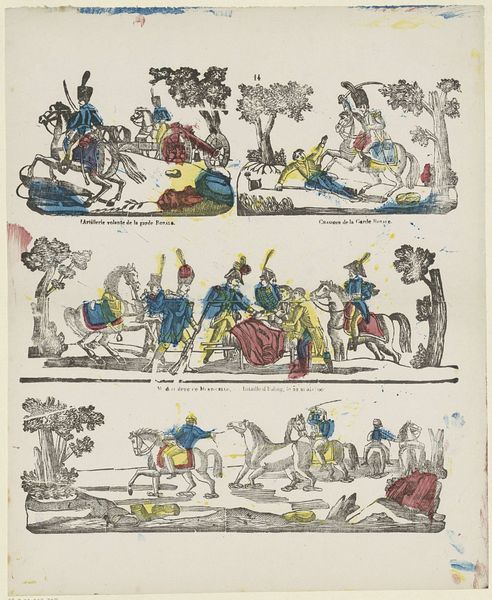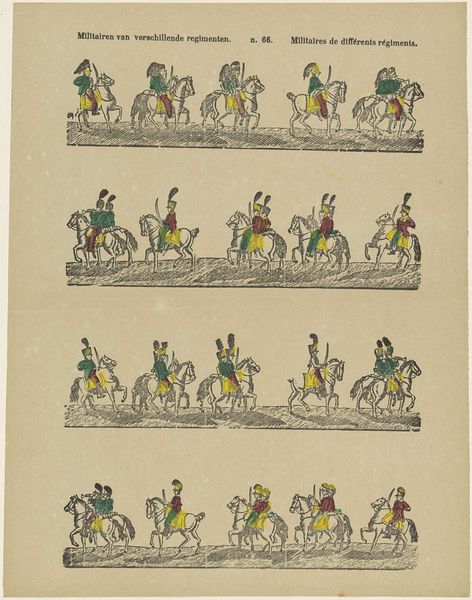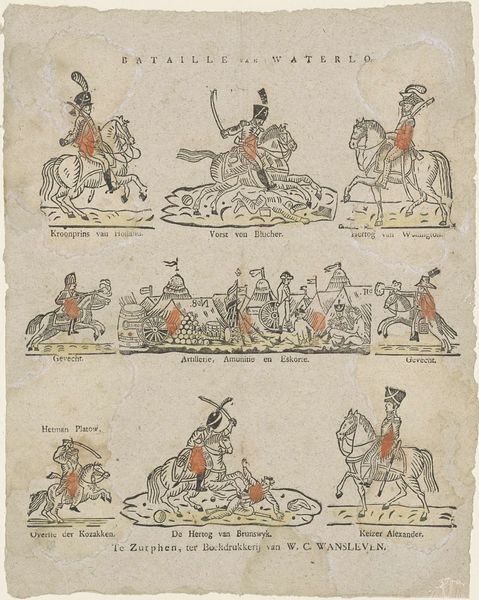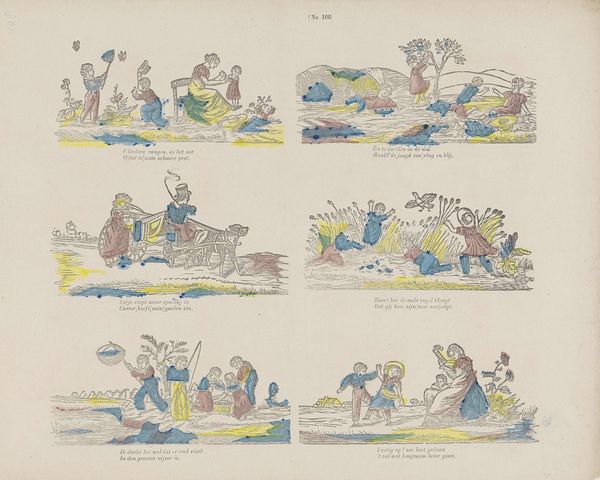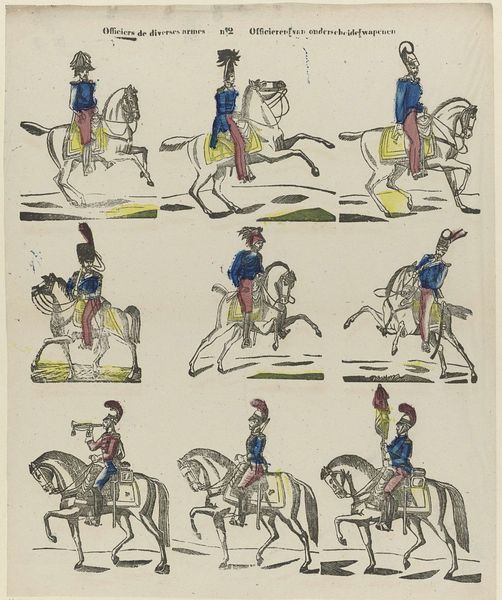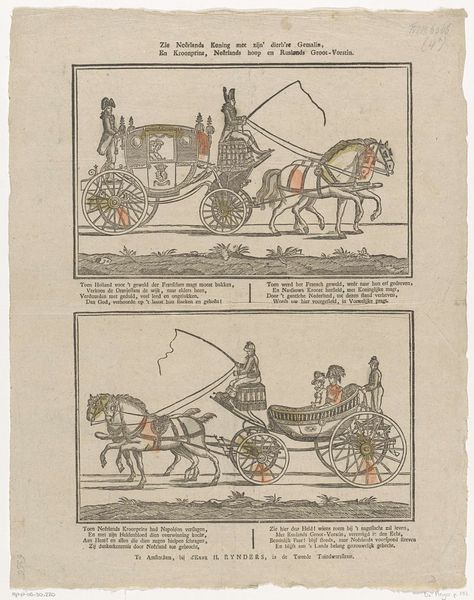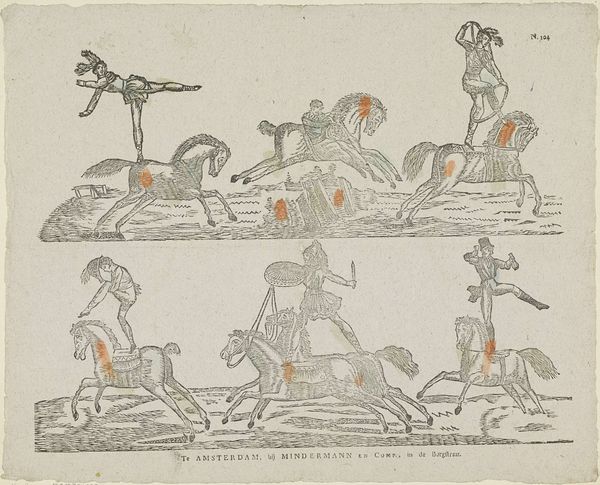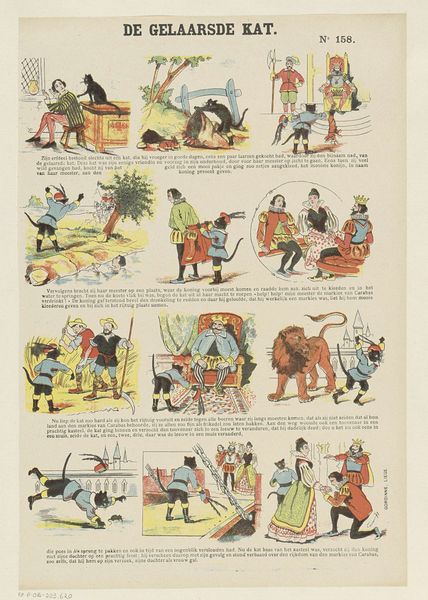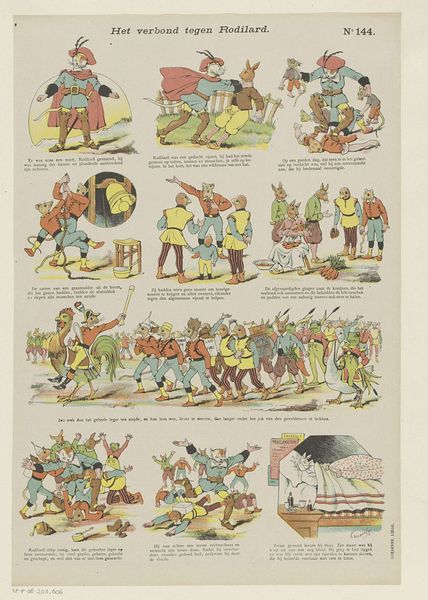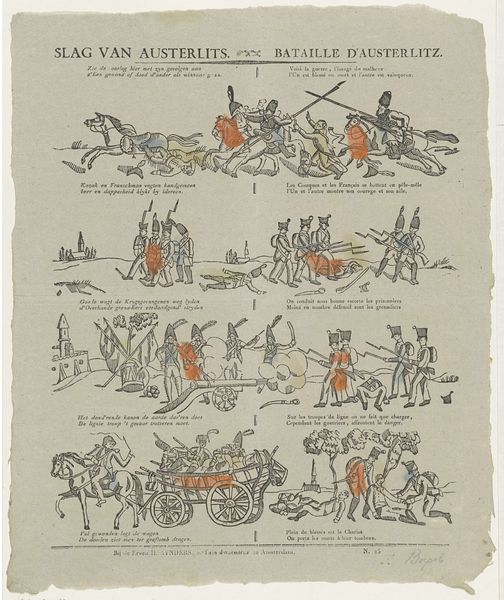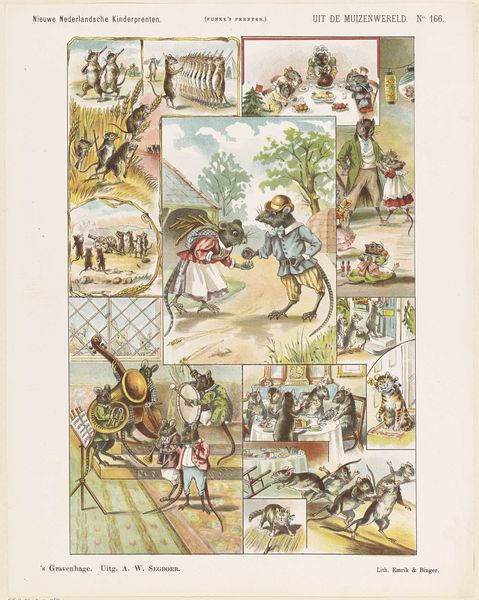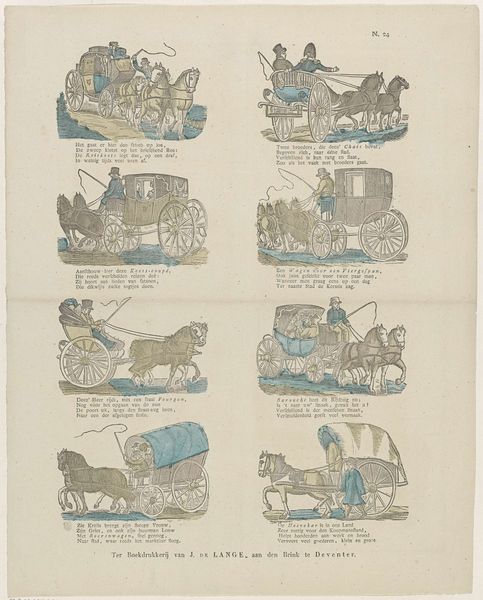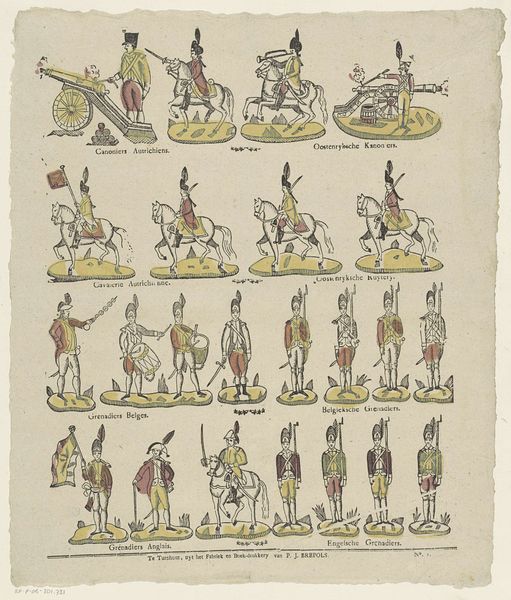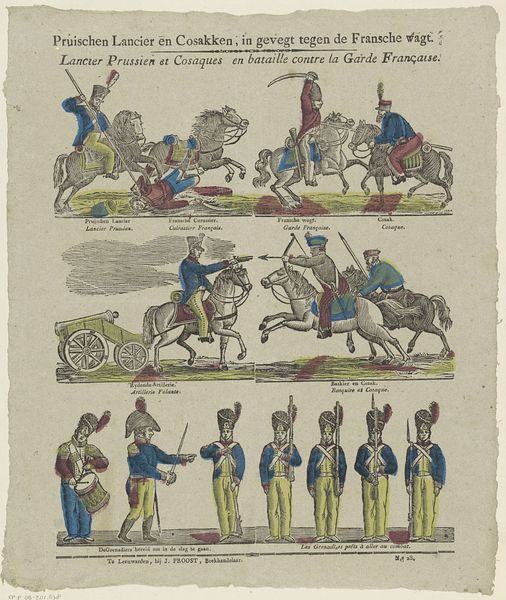
print, engraving
# print
#
genre-painting
#
history-painting
#
engraving
Dimensions: height 371 mm, width 320 mm
Copyright: Rijks Museum: Open Domain
Editor: This is “Militairen,” a print by M. Hemeleers-van Houter, likely made sometime between 1827 and 1894. It’s currently housed in the Rijksmuseum. What strikes me most is its almost playful composition, despite depicting military scenes. How would you interpret this work from a formalist perspective? Curator: The artist's employment of line is immediately apparent. Notice the delicate, almost whimsical, rendering of the horses and soldiers. Each vignette operates as an independent study in form and balance, with negative space playing as crucial a role as the areas of dense engraving. Observe the limited color palette. How does the interplay between the grey engraving and select applications of primary colours affect the composition? Editor: It’s interesting that you mention the negative space and color, since they lend a peculiar feel. Given the subject matter, I would almost expect the scene to be bustling. It almost comes off as something more fit for a children's book. Do you believe that contrast to be intentional? Curator: It's a question of intended function. Is the contrast perhaps functioning as a commentary on the militaristic ideal itself? Does the schematic rendering flatten what could otherwise have become a glorification of military prowess, thus hinting towards deeper and more subversive narrative intentions on behalf of the artist? Editor: I never considered that this stylistic treatment was more purposeful! Looking closer, I now appreciate the visual strategy that is achieved when those things work together. It definitely inspires consideration! Curator: Precisely. Form and content become inseparable; a harmonious yet challenging visual experience. I learned that even genre and historical works need to be regarded with formalist curiosity. Editor: And I learned to always challenge any preconceived expectations about artwork's function and context by always returning to an open reading of form and composition.
Comments
No comments
Be the first to comment and join the conversation on the ultimate creative platform.
